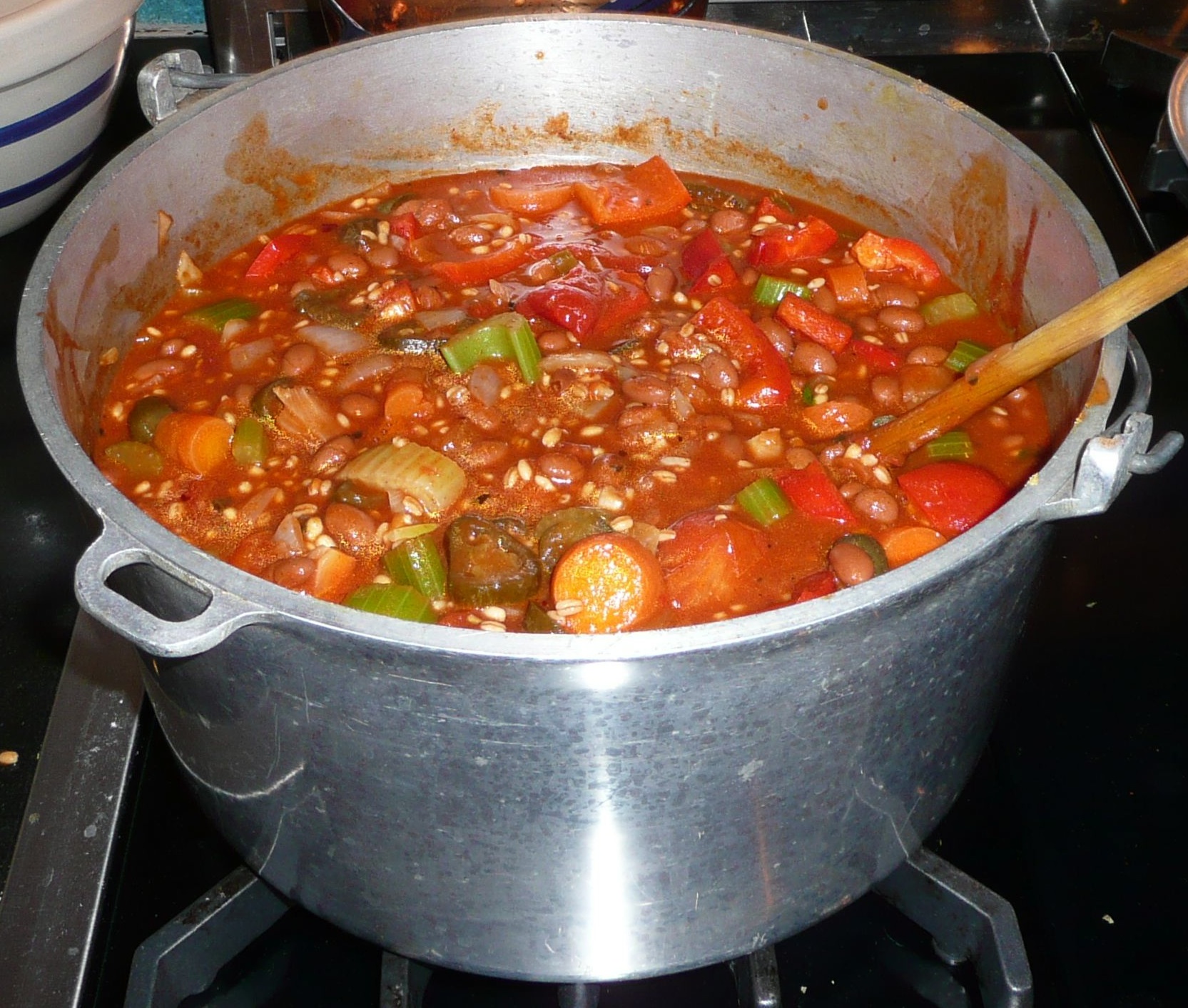Makes 8 generous servings
- 2 cups tomato juice (see notes)
- 2 cups pearl barley
- 4 Tablespoons olive oil
- 4 medium onions
- 10 cloves garlic
- 6 carrots, scrubbed but not peeled
- 6 stalks of celery
- 1 Tablespoon cumin
- 1 Tablespoon red pepper flakes
- 2 teaspoons basil
- 2 lbs canned whole tomatoes
- 2 Tablespoons lemon juice (juice of ½ a lemon)
- 2 4oz cans jalepeños (see notes)
- 4 15oz cans calienté-style kidney beans (see notes)
- 2 large bell peppers, chopped
Special equipment
- A large (at least 8 quarts) stew pot
Method
- Bring the tomato juice to boil. Remove from heat and add barley. While you let it stand for 15 minutes, finely chop the garlic and coarsely chop the onions. Fry in the oil in the bottom of your pot until translucent.
While the onions are cooking, coarsely chop the carrots and celery. Add to the onions along with the tomatoes (but not their juice; reserve that for later), lemon and spices, cooking until tender (about 15 minutes). Roughly chop the peppers and add with the beans, jalepeños, juice from the tomatoes and the barley. Stir, cover, and simmer for about 30 minutes, stirring occasionally.
Notes
-
You can use whatever you have on hand for the tomato juice that you soak the pearl barley in: thinned tomato sauce, V8, leftover spaghetti sauce…↩
We’ve been serving this for the past 20 years using sliced jalapeños, but if you’ve got some fresh habeñeros, or some wonderfully smokey chipotle, use whatever you want, just don’t overdo the sum of the Scoville rating for your diners.↩
Oh no! No calienté-style kidney beans available where you live? Just use regular kidney beans and add some chili powder and maybe a shake or two of garlic powder and cayenne pepper.↩
This dish freezes well, another reason to make a huge vat.
Quickly cribbed on an index card 20 years ago, the ur-source of the recipe comes from Taylor but how close our current recipe resembles her original instructions, we do not know.
Suggestions
- We’ve tried this multiple times with bulghur wheat, a mix of bulghur and barley, and inevitably come back to entirely barley.
Surely the dish can easily be made gluten-free by substituting brown rice, quinoa, buckwheat or other glutenless grain. Watch out for wheat powder in calienté-style beans. Hey, how about trying it with Cope's Dried Corn? Would it be too sweet? We'll try that next.


